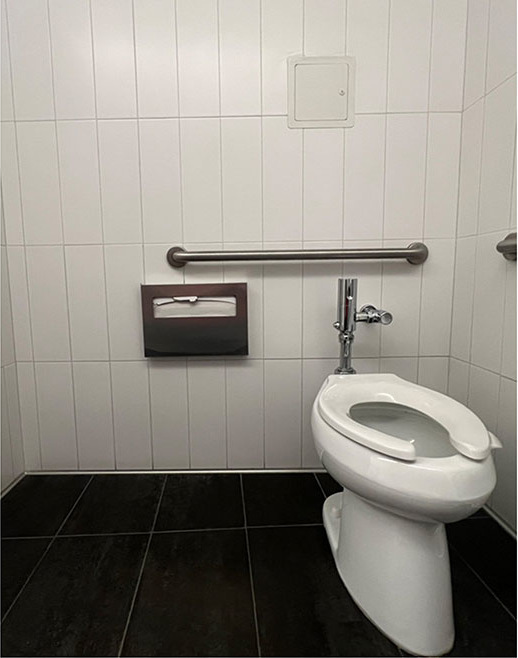Plumbing Essentials — Design Approaches, Codes and Everything in Between | Lowell Manalo
Water hammer arrestor — simply install one and be done with it
Design considerations to avoid potential pitfalls.

Images courtesy of the author.
Water hammer arrestors, as the name implies, are designed to absorb the momentum or shock of changes in water flow from fast-acting valves in hydronic systems. For domestic water systems, the fast-acting valves in question are most often restroom plumbing fixtures. While there is an abundance of information about what water hammering is, its sizing and the different types of hammer arrestors, let’s take a deeper dive below the surface and explore the layers beneath.
Some aspects of water hammer design are nuanced, some often neglected and others still that may not be immediately apparent. The below can aid with decision-making on these systems and raise awareness of potential pitfalls when only trying to apply the very minimum as required by code.
Required by code — no buts, no ifs
Have you ever heard from others who refuse to install hammer arrestor because “they don’t work?” I always cringe when hearing this because regardless of the different types and manufacturers, thousands of water hammer arrestors have been installed and I have yet to see one that does not work when installed and sized properly. Most of the time the opposite is true, where not providing the water hammer arrestor created issues observed on site. The code clearly requires water hammer arrestors be installed where quick closing valves are used — no buts, no ifs.
Fixture units can vary across different jurisdictions
When selecting water hammer arresters, always refer to the sizing charts provided by manufacturers, which are often taken from the Plumbing and Drainage Institute (PDI) fixture unit methods. These charts, based on fixture unit methods, are helpful tools for engineers and designers. However, keep in mind that local codes may vary, and that the Authority Having Jurisdiction (AHJ) may have code amendments that change the fixture unit values normally assumed. With that in mind, always verify local code requirements when selecting and sizing water hammer arresters.
Access panels: not required but highly recommended
Have you ever encountered a situation where you arrived at a site to diagnose a water hammer issue only to find that the wall was already closed in, with no access panel to verify the installation? Most manufacturers’ specifications suggest that access to a water hammer arrestor is not required and recommend checking the local codes to confirm otherwise. This is further reinforced by ASSE 1010, noting that water hammer arrestors need to be “maintenance-free.” Note that maintenance-free means that under normal operating conditions, the device should not require routine maintenance. This does not, however, mean that the device will never fail.

I strongly recommend installing the water hammer arrestor in an accessible location or provided with an access panel.
I strongly recommend installing the water hammer arrestor in an accessible location or provided with an access panel. There may be other unforeseen factors such as dirt getting into the arrester during installation can damage or affect the performance of the arrestor. Installing an access panel also ensures that you have the ability to inspect it should it fail and require replacement. While we can easily justify our design by showing the water hammer arrestor with access panels, ensuring its implementation is a service we owe our clients. The inconvenience to our clients caused by a bathroom wall that needs to be opened due to a failed (or not installed) arrestor can disrupt their operations and is entirely avoidable.
It's a water hammer arrestor, not a pressure-reducing valve.
Have you ever heard of a recommendation to install a larger water hammer arrestor to help with alleviating hammering due to water pressure supply being above 90 PSI? This is a misguided approach of applying a Band-Aid in lieu of fixing the underlying issue. Increases in system pressure over time can overwhelm and greatly reduce the effectiveness of water hammer arrestors.
Note that maintenance-free means that under normal operating conditions, the device should not require routine maintenance. This does not, however, mean that the device will never fail.
Plumbing codes, such as the International Plumbing Code (IPC) and the Uniform Plumbing Code (UPC), set the maximum water pressure for service to plumbing fixtures at 80 PSI. Pressures exceeding this 80 PSI limit can be hazardous, potentially causing damage to the plumbing system and fixtures, leading to water waste and increased stress on pipes and fittings, resulting in higher frequencies of pipe leaks or bursts. A better approach uses pressure-reducing valves to bring the water pressure at the plumbing fixtures to less than the 80 PSI recommended limit.
Water hammer arrestors are crucial for protecting plumbing systems from the effects of water hammering, but they are not intended for managing or regulating high water pressure. It is important to ensure that proper troubleshooting methods are performed and that the appropriate device is used for the identified issue. Failure to do so will result in potential damage to system or code violation requirements that can have legal and financial implications.
Regardless of our preferences and personal opinions, plumbing codes require an arrestor to be installed where quick-closing valves are utilized. Simply install one and be done with it, but be sure that it is sized and installed correctly.
Looking for a reprint of this article?
From high-res PDFs to custom plaques, order your copy today!







